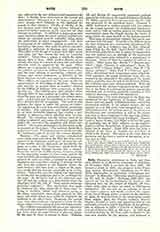

Roth, HEINRICH, missionary in India and Sanskrit scholar, b. of illustrious parentage at Augsburg, December 18, 1620; d. at Agra, June 20, 1668. He became a Jesuit in 1639; was assigned to the Ethiopian mission (Piccolomini, “Instructio pro P. Hen. Roth, Ingolstadio, ad missionem Aethiopicam profecturo”, in Huonder, “Deutsche jesuitenmissionare im 17. and 18. Jahrh.”, Freiburg, 1899, 213), and arrived at Goa by the land route, via Ispahan. He labored first on the Island of Salsette off Goa, where from time to time he acted as Portuguese interpreter. He was sent on an embassy to one of the native princes, and finally reached the empire of the Great Mogul, where, as rector of the residence at Agra, he was involved in the persecution under Shah Jahan. Here the French explorer, Francis Bernier, learned to know and appreciate him as one eminently versed in expert knowledge of the philosophy of religions in India (“Travels in Hindustan”, new ed., Calcutta, 1904, p. 109 sqq.). In 1662 Roth revisited Europe by the land route via Kabul to obtain new recruits for the mission, and returned to Agra in 1664. Roth shares with the Jesuit, Hanxleden, the fame of being among Europeans the pioneer Sanskrit scholar, and of having compiled the first Sanskrit grammar (Wiener, Zeitschr. fur die Kunde des Morgenlandes, XV, 1901, pp. 303-320). “During his stay in Agra, he succeeded in persuading some Brahmins to teach him Sanskrit and, after six years of diligent study, he obtained complete mastery of this difficult tongue. He was the author of the interesting description of the Sanskrit alphabet, published by Athanasius Kircher in his China illustrata” (Max Muller, “Lectures on the Science of Language”, London, 1866, p. 277). Roth’s works, most of which were published by his learned friend, Athanasius Kircher, S.J., are: “Relatio rerum notabilium Regni Mogor in Asia“, which contains the first information concerning Kabul which had reached Europe (Straubing, 1665, Aschaffenburg, 1668); “Iter ex Agra Mogorum in Europam ex relatione PP. Joh. Gruberi et H. Roth” in Kircher, “China illustrata” (Amsterdam, 1667), pp. 91 sqq.; “Itinerarium St. Thomae Apost. ex Judaea in Indiam”, and “Dogmata varia fabulossissima Brachmanorum”, ib., 156-162; “Exactissimum opus totius grammaticae Brachmanicae cujus et rudimenta is [Roth] primus Europse communicavit” in “Romani Collegii S.J. musaeum” (Amsterdam, 1678), p. 65; a letter (Rome, 1664) in “Welt-Bott”, I (Augsburg, 1726), 35; manuscript-letters and relations in Royal Library, Brussels, Nos. 6828-29, fol. 415.
ANTHONY HUONDER

